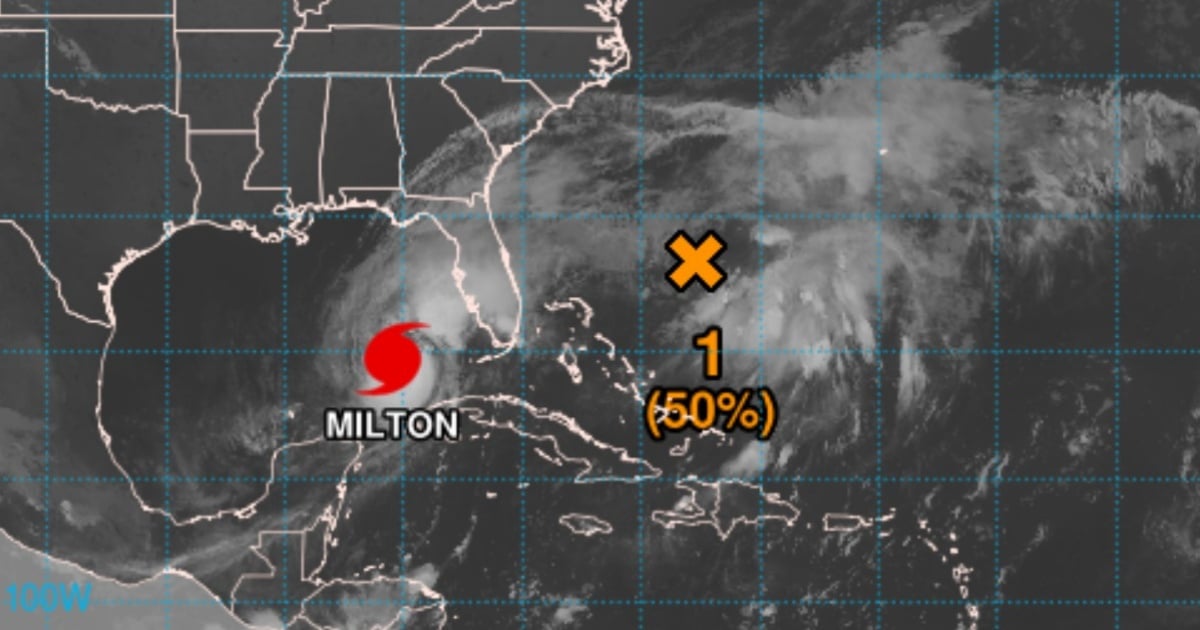
Milton continues its advance toward Florida as a "catastrophic" category 5 hurricane, with maximum sustained winds of 260 km/h (160 mph) and a minimum central pressure of 907 mb.
At 5:00 a.m. CDT this Wednesday, the eye of the hurricane was located about 255 km (160 miles) west of Dry Tortugas and approximately 485 km (300 miles) southwest of the city of Tampa.
Milton is moving northeast at a speed of 22 km/h (14 mph) and is expected to maintain this direction until early Thursday morning, when it will make landfall on the central-west coast of Florida.
Subsequently, it is expected to turn toward the east-northeast, moving away toward the Atlantic Ocean on Thursday afternoon.
The Miami Meteorological Service warned on Wednesday morning that heavy rains, winds, and even the possibility of tornadoes are expected in the next few hours in South Florida.
According to forecasts, Milton is expected to make landfall late tonight or early Thursday morning, causing destruction in a large part of the state.
Local authorities have issued evacuation orders for the most vulnerable areas, and the population is urged to follow all safety instructions.
Dangerous conditions will remain for the next 36 to 48 hours, and people in at-risk areas must take all precautions to protect their lives and property.
Milton remains an extremely dangerous hurricane, and its impact could be devastating in coastal communities.
It is crucial to stay informed through official sources and to follow the guidelines of local emergency services.
Alerts and warnings in effect
The hurricane has triggered a series of warnings and alerts for the affected areas. The areas under storm surge and hurricane warning include:
Cyclonic surge warning for the west coast of Florida, from Flamingo to Yankeetown, and the east coast from Sebastian Inlet to Altamaha Sound, Georgia.
Hurricane warning for the west coast of Florida, including Tampa Bay, and the east coast from St. Lucie to Ponte Vedra Beach.
These warnings mean that dangerous conditions are expected and that areas at risk should be prepared for the imminent impact of strong winds and storm surges.
Cyclonic surge and torrential rains
One of the biggest dangers of Milton is the storm surge, which can cause devastating flooding along the Florida coast.
In areas like Tampa Bay, waters are expected to reach between 10 and 15 feet above ground level, while in places like Boca Grande and Bonita Beach, storm surges of up to 12 feet are anticipated. These floods could endanger the lives of those in coastal areas.
In addition, Milton will bring heavy rainfall, with accumulations of between 6 and 12 inches across much of the Florida peninsula, and locally up to 18 inches. These precipitation levels increase the risk of flash flooding and urban flooding, as well as significant river flooding.
Winds and tornadoes
Hurricane-force winds extend up to 30 miles (45 km) from the center of the storm, while tropical storm-force winds reach up to 125 miles (205 km).
Hurricane conditions are expected to be felt in Florida tonight, spreading across the peninsula and also affecting the east and west coasts.
Furthermore, it is likely that several tornadoes will develop today and tonight in parts of central and southern Florida, further complicating the situation.
What do you think?
COMMENTFiled under: